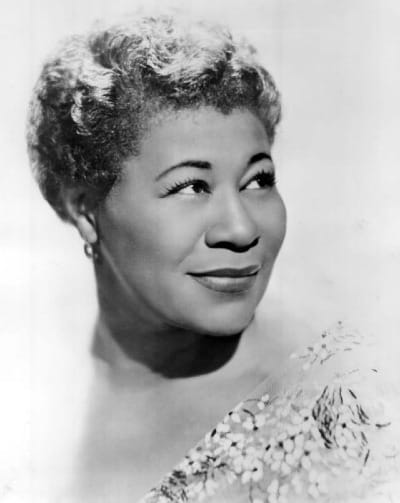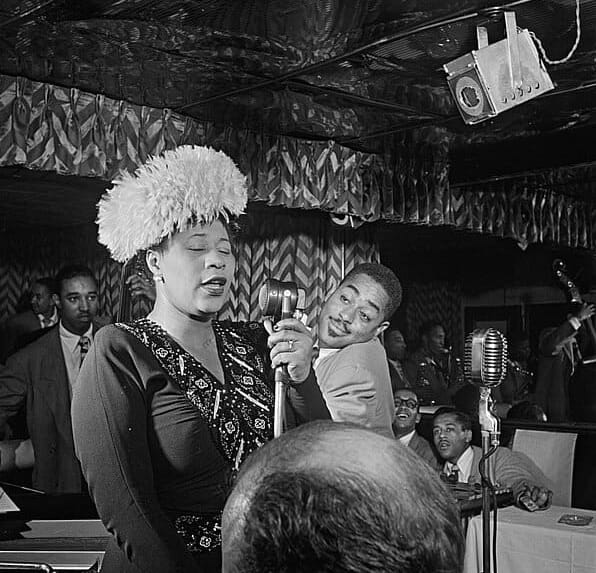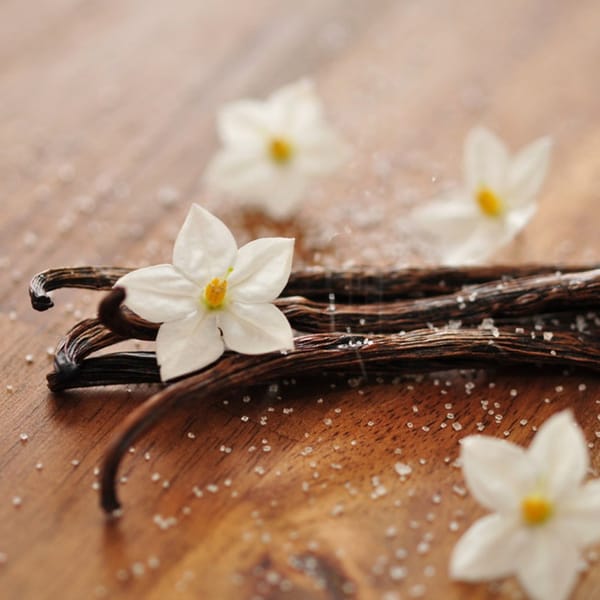Women of the Arts: Ella Fitzgerald

Ella Fitzgerald (April 25, 1917 - June 15, 1996) has always been a prominent figure in the world of jazz. She is often referred to as the “The First Lady of Song”, “Queen of Jazz” and “Lady Ella.” Rightfully so, as she was the most popular female jazz singer in the United States for more than half a century. In her long career as a performer, she won 13 Grammy awards and sold over 40 million albums. Whether one encountered her melodies intentionally or unwittingly, it is almost inevitable that everyone has been touched by the magic of Ella Fitzgerald's voice at some point. Regardless, her life as a singer is an interesting one and portrays the profound impact women have had in the music industry.
Passion, Discovery and Heartbreak
Fitzgerald and her family were active members of the Bethany African Methodist Episcopal Church and would regularly attend worship services, Bible study, and Sunday school. The church provided Fitzgerald with her earliest experiences in music. However, it was in the third grade when her passion for music and performance really began to emerge. Her love for dancing found expression, and she developed a particular admiration for Earl Snakehips Tucker, a renowned dancer of the time. She also started listening to jazz recordings by Louis Armstrong, Bing Crosby and The Boswell Sisters. She especially idolised the Boswell Sisters lead singer, Connee Boswell, after listening to one of her records. Boswell sparked Fitzgerald’s interest in singing and helped shape her formative years as an aspiring performer.

In 1932, when Fitzgerald was 15 years old, her mother died from complications due to a serious injury sustained in a car accident. Fitzgerald was left under the care of her stepfather who allegedly abused her. Grief-stricken, she began skipping school to work as a lookout at a bordello and with a mafia-affiliated numbers runner. Once the authorities caught her, she was placed in the Colored Orphan Asylum in Riverdale, Bronx, New York. Subsequently, she was transferred to the New York Training School for Girls, a state reformatory school in Hudson, New York. The conditions at these facilities were grim as she suffered beatings at the hands of her caretakers. Eventually, Fitzgerald escaped from the reformatory. The 15-year-old found herself broke and alone during the Great Depression. Despite this, she made ends meet and survived during 1933 and 1934 in part by singing on the streets of Harlem.
A Promising Future
Ella Fitzgerald kickstarted her career at the age of 17 in one of the earliest Amateur Nights at the Apollo Theater on November 21, 1934. She intended to go on stage and dance but was intimidated by a local dance duo called the Edwards Sisters and decided to sing instead. She sang “Judy” and “The Object of My Affection” and won first prize. In 1935, Fitzgerald won the chance to perform for a week with the Tiny Bradshaw Band at the Harlem Opera House. Later that year, she was offered the opportunity to test with Chick Webb’s band at a dance at Yale University. They were reluctant to sign with her at first due to her gawky and unkempt appearance. However, after being met with approval by both audiences and her fellow musicians, she was asked to join Webb’s orchestra and gained acclaim as part of the group’s performances at Harlem’s Savoy Ballroom.
Together with the band, Fitzgerald recorded several hit songs, including “Love and Kisses” and “If You Can’t Sing it, You’ll Have to Swing It.” But it was really her 1938 version of the nursery rhyme, “A-Tisket, A-Tasket” that resulted in her rise to popularity. The song, which she co-wrote, became a major hit on the radio and was one of the biggest-selling records of the decade. When Chick Webb died on June 16, 1939, his band was renamed Ella Fitzgerald and Her Famous Orchestra, for which Fitzgerald took on the role of bandleader. Between 1939 and 1942, she recorded nearly 150 songs with Webb’s orchestra. In addition to this, she also performed and recorded with the Benny Goodman Orchestra.
The Start of an Era
Fitzgerald and her band played their last concert at Earl Theatre in Philadelphia. While on tour with Dizzy Gillespie’s band in 1946, she fell in love with bassist Ray Brown whom she got married to. At the time they met, Ray was working for Norman Granz, a producer and manager on the “Jazz at the Philharmonic” tour. Granz saw the star-like quality Fitzgerald possessed and convinced her to sign with him. Under his management, she joined the Philharmonic tour and worked with Louis Armstrong on several albums.
From 1956 to 1964, she recorded covers of other musician’s albums including those by Cole Porter, Duke Ellington and Irving Berlin. This project was very popular among her fans and the artists she covered. She also began appearing on television and became a frequent guest on numerous variety shows such as “The Tonight Show,” “The Nat King Cole Show,” and “The Andy Williams Show”.
Ella’s manager was known for feeling very strongly about civil rights and required equal treatment for his musicians no matter where they travelled, whether it be a hotel, a restaurant or a concert hall. Once on a tour in Dallas for the Philharmonic, a police squad barged backstage and began to hassle the performers. They came into Fitzgerald’s dressing room, where she was playing dice with a couple of other band members, and arrested everyone.
Ella also received support from outside of the Philharmonic, namely celebrities such as Marilyn Monroe. In an interview, Ella later said: “I owe Marilyn Monroe a real debt. It was because of her that I played the Mocambo, a very popular nightclub in the ’50s. She personally called the owner of the Mocambo and told him she wanted me booked immediately, and if he would do it, she would take a front table every night. She told him – and it was true, due to Marilyn’s superstar status – that the press would go wild. The owner said yes, and Marilyn was there, at the front table, every night. The press went overboard. After that, I never had to play a small jazz club again. She was an unusual woman – a little ahead of her time. And she didn’t know it.”
Fitzgerald continued to work hard, despite her worsening health conditions. She performed in New York with Frank Sinatra and Count Basie. Five years later, she was inducted into the Down Beat magazine Hall of Fame and received Kennedy Center Honors for her contributions to the arts. In 1987, United States President Ronald Reagan awarded Ella the National Medal of Arts. Several years later, France presented her with their Commander of Arts and Letters award. In addition to this, Yale, Dartmouth and several other universities bestowed Fitzgerald with honorary doctorates.

Still honouring her roots, she used her celebrity status and wealth to make generous donations to organisations for disadvantaged youths. This motive became a driving force for her work, only encouraging her to surpass even more limits and strive for excellence.
End of an Era
In 1986, Fitzgerald underwent quintuple coronary bypass surgery. She was also diagnosed with diabetes and rumour had it that she would never be able to sing again. However, she proved everyone wrong and carried on with her exhaustive schedule despite protests by family and friends. In 1991, she gave her final concert at New York’s Carnegie Hall.
The effects of her diabetes worsened, causing her to experience severe circulatory problems which resulted in the amputation of both of her legs below the knees. On June 15, 1996, Ella Fitzgerald died in her home in Beverly Hills. Her final resting place was the “Sanctuary of the Bells” section of the Sunset Mission Mausoleum at Inglewood Park Cemetery in Inglewood, CA.



